- Created by Anand Inamdar, last modified by Annu on Sept 06, 2023
You are viewing an old version of this page. View the current version.
Compare with Current View Page History
« Previous Version 40 Next »
PDF generation is not working on your server/data center version of Jira?
ARN needs Google chrome installed on the Jira server, for PDF generation. Follow instructions on this page to install chrome - Support docs
If you have chrome installed but ARN is not detecting it, follow the troubleshooting guide.
To customise content of the PDF template, read this - Customising release notes content
To add the PDF action in a rule, read this article - Actions
Create a PDF template
Navigate to the templates page on the ARN screen & click on the ‘Create’ button.
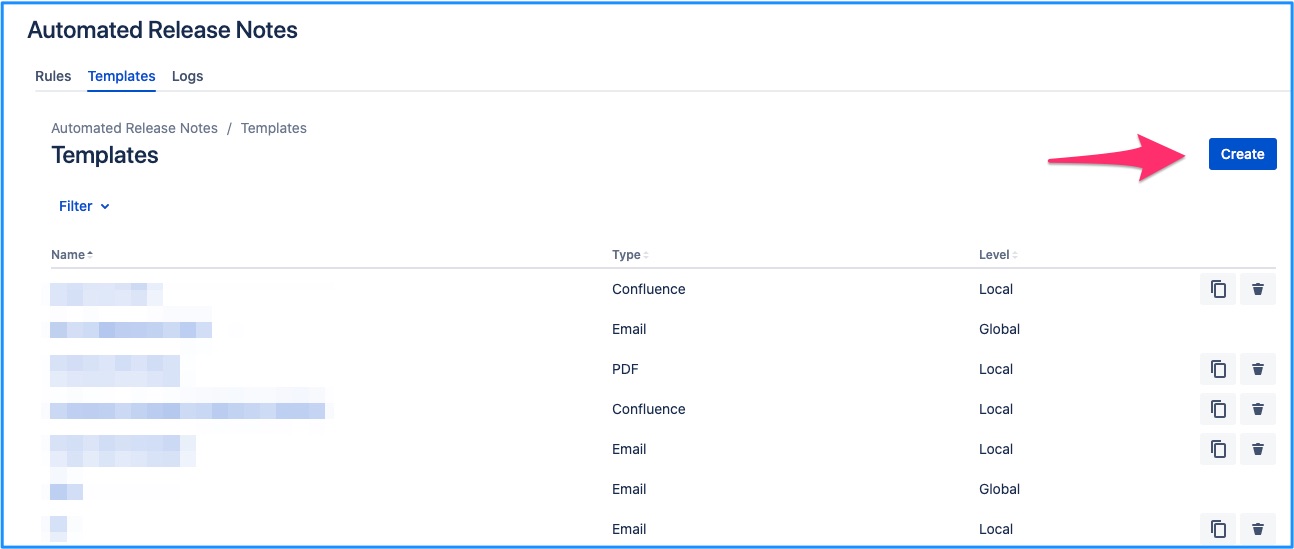
You will be brought to the template creation page where Email will be selected by default. Change the dropdown selection to ‘PDF’.
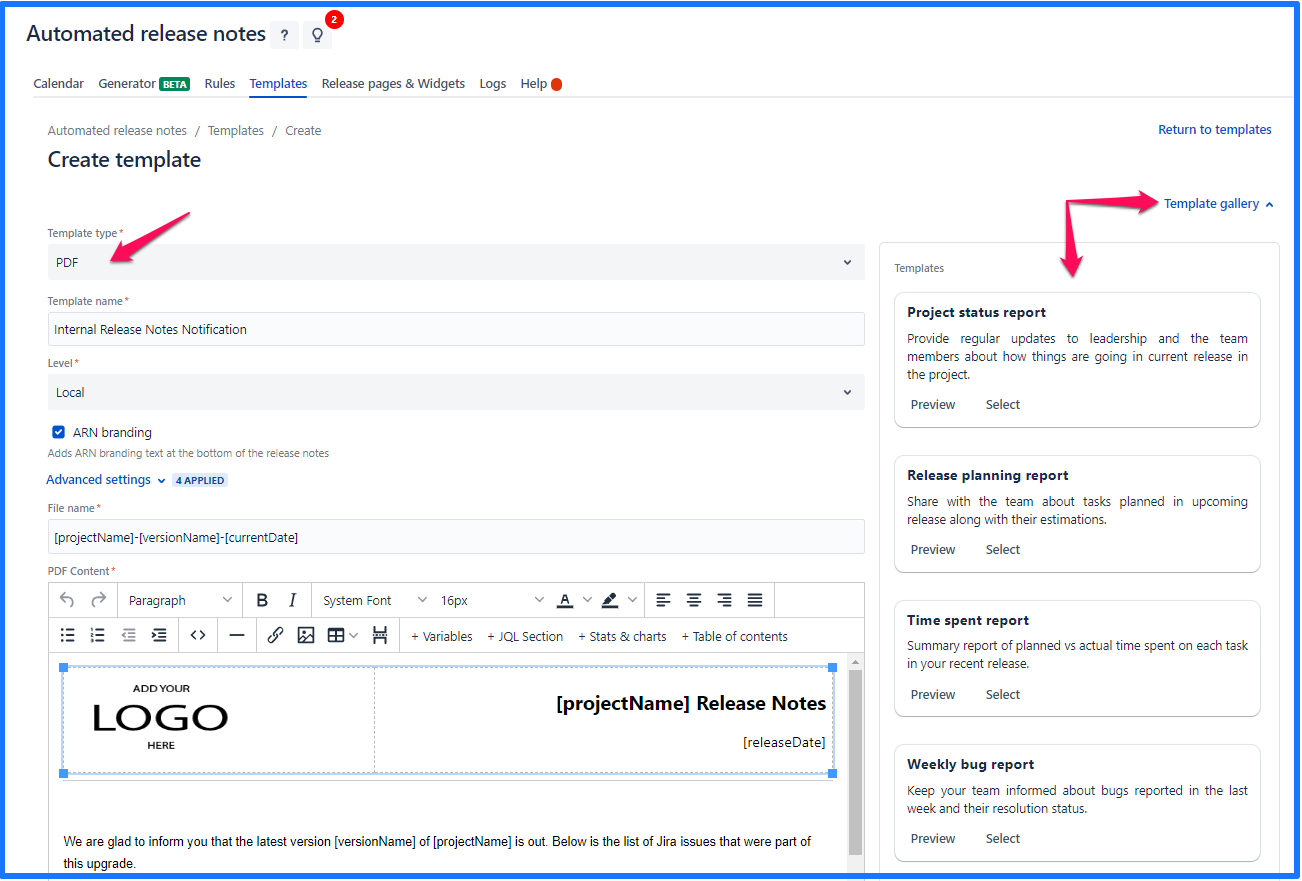
Default template will be populated. Make any required changes & save them to create a new template. You can also use some sample templates available in the template gallery on the left side, refer above image.
Edit a PDF template
An existing PDF template can be edited by clicking on the template name link from the list.
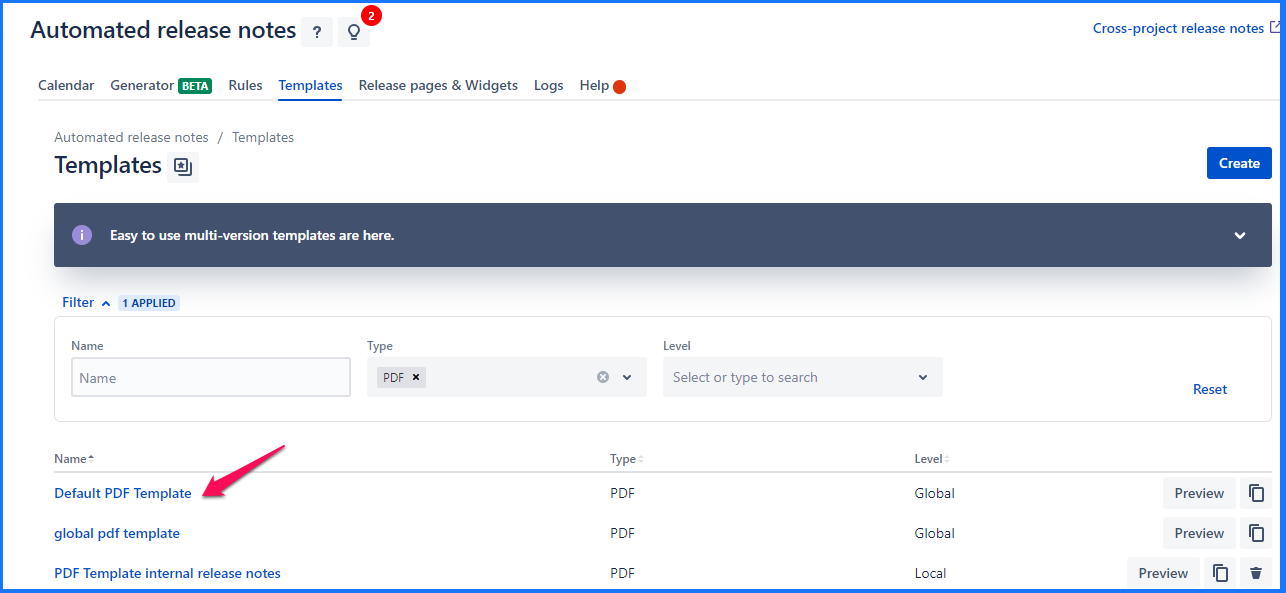
This will bring you to the template edit screen, which is same as that of create - except, data is pre-populated for the current template. Make any required changes, click on save and the template is updated.
Local level templates can always be edited right away. But whether a global template can be edited in the given project depends on where it was created. If it was created within the current project, then it can be edited otherwise it cannot be.
To know more about template levels, read this -https://amoeboids.atlassian.net/wiki/spaces/ARN/pages/204013600/Templates#What-are-template-levels---local-%26-global%3F
Template that can be edited
Template that you can edit will have ‘Save’ button at the left bottom of the screen.
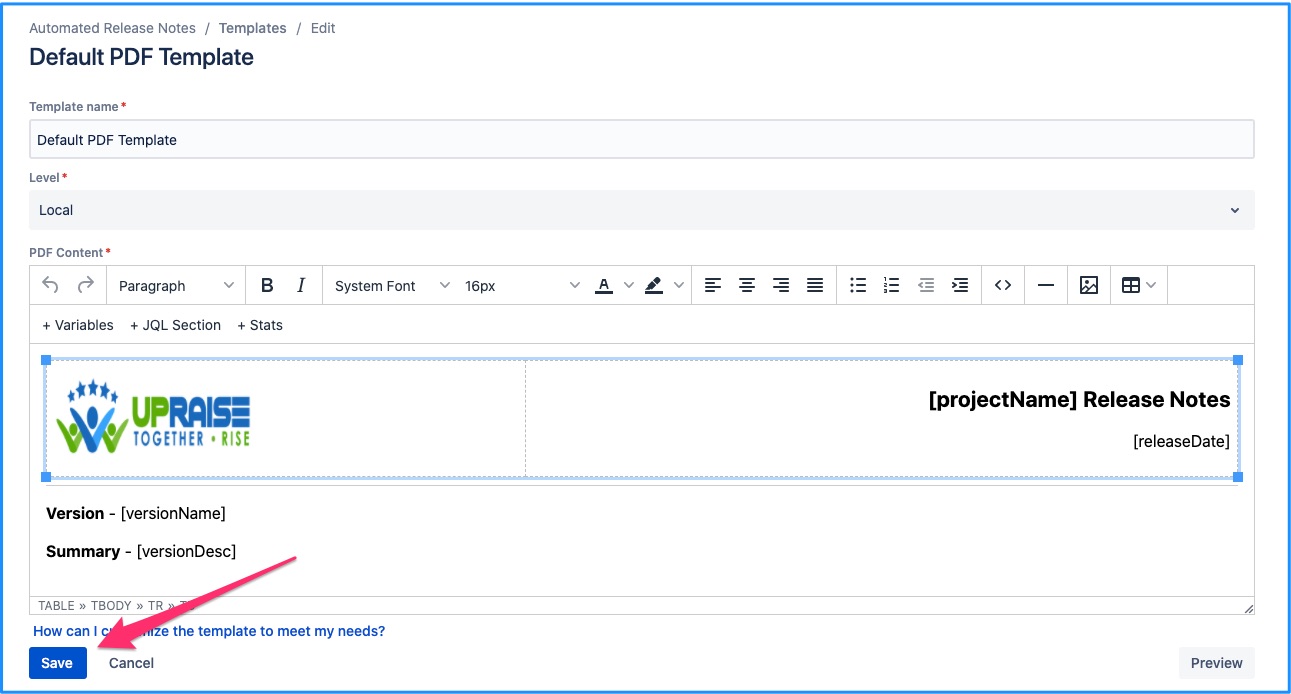
Template that cannot be edited
If the template was not originally created within the current project, then it cannot be edited here. ‘Save’ button will not be available in this case. And an additional message is displayed indicating the parent project for the template.

Delete a PDF template
An existing PDF template can be deleted by clicking on the delete icon from the list.
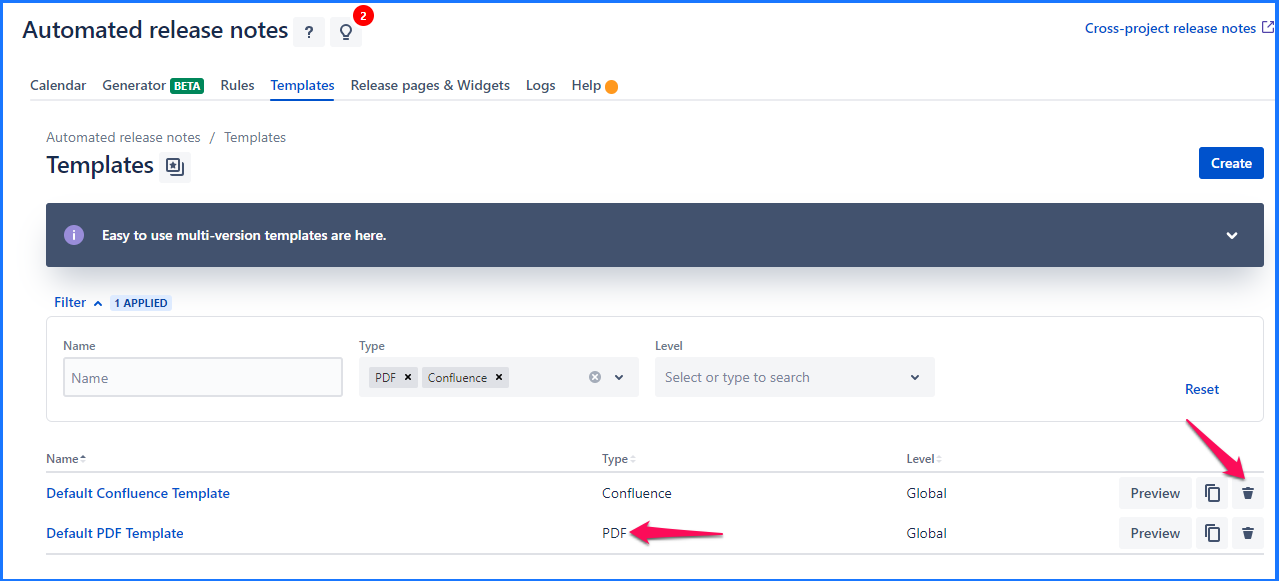
Local level templates can always be deleted right away. But whether a global template can be deleted in the given project depends on where it was created. If it was created within the current project, then it can be deleted otherwise it cannot be.
To know more about template levels, read this - https://amoeboids.atlassian.net/wiki/spaces/ARN/pages/204013600/Templates#What-are-template-levels---local-%26-global%3F
Template that can be deleted
Template that you can delete will have a delete button in the rightmost column of the template list view.
Template that cannot be deleted
If the template was not originally created within the current project, then it cannot be deleted here. ‘Delete’ button will not be available in this case.
Preview a PDF template
We are storing the locale of user in cache which is valid for 30 mins. If any user changes their Jira language, it might take 30 mins to reflect in the app.
When creating or editing a PDF template, it can be previewed immediately. Just click on the ‘Preview’ button once desired changes have been done.
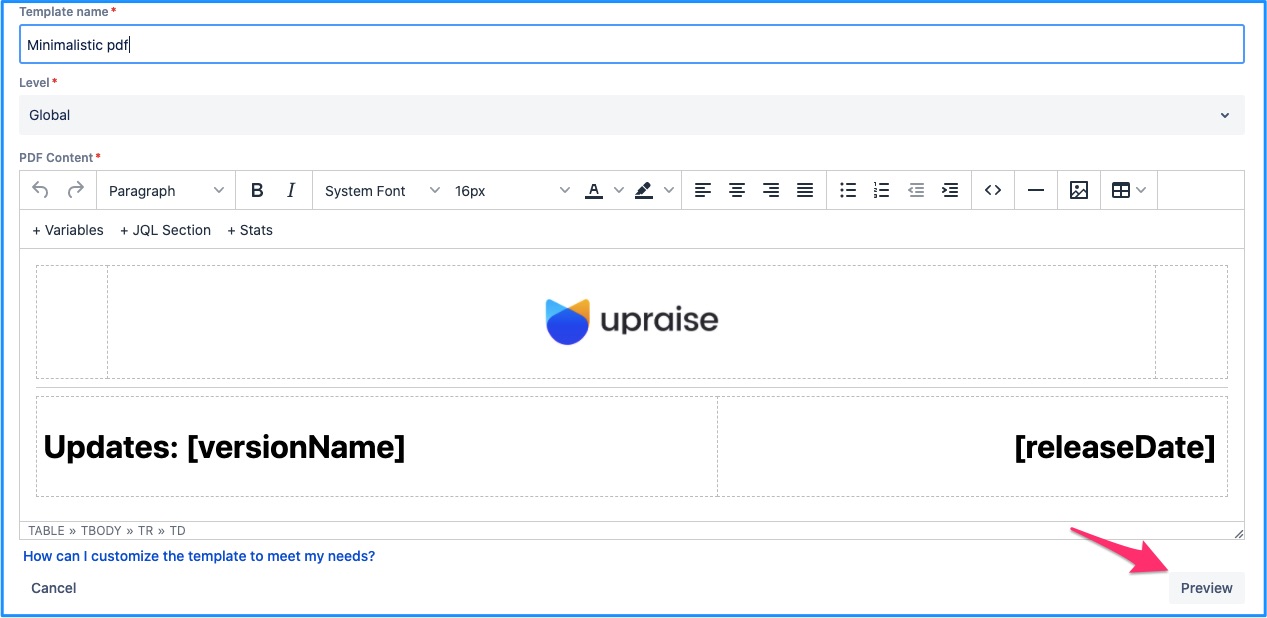

Based on the JQLs used in the PDF template, you will need to input values. e.g. in the above screenshot, user is asked to choose 1 version since the template’s JQLs have 1 version variable in them.
Read on to know more about Generating release notes from multiple versions in a project
This will generate the PDF template preview file in your browser. Depending on your browser setting, it will be automatically downloaded or a confirmation will be asked from you.
If what you see is the desired result, save the template.
PDF template fields

Template type
Here, PDF option is selected since we are creating a PDF type template
Template name
This is for internal reference & doesn’t show up in the actual release PDF file.
Level
Local or Global - Determines whether the PDF template is available to be used in other projects across Jira.
Cross-project - For cross-project templates (which can be managed only from the cross-project ARN screen), this field is disabled from editing & is set to cross-project by default.
ARN branding - To define whether you wish to show ARN branding in release notes.
For Free ARN app it is default and cannot be unchecked
Advanced settings and Header, Footer - Read https://amoeboids.atlassian.net/wiki/spaces/ARN/pages/162267218/PDF#Further-customisation-with-advanced-settings below
File name -
This determines the name of the PDF file that will be generated. You can use variables in this field similar to Email subject. Max length is ~100 characters, extra characters will be trimmed at the time of file generation.
PDF content -
The actual release PDF content is generated within the PDF body.
Further customization with advanced settings
Advanced settings in the PDF template are for further customization. Clicking on the advanced settings link brings you options to customize header & footer along with a few other options for your PDF.
Advanced settings
Layout - Whether you want the PDF in portrait or landscape orientation
Paper Size - You get to select the A0-A5 or legal, letter, and tabloid size of the paper here
Margin - Set up a correct margin to display the content(text/images) properly. If you are adding header/footer, you will have to use custom margins of appropriate dimensions.
Header & footer
You can format text, add images, tables, links, align the content in desired manner separately for header & footer.
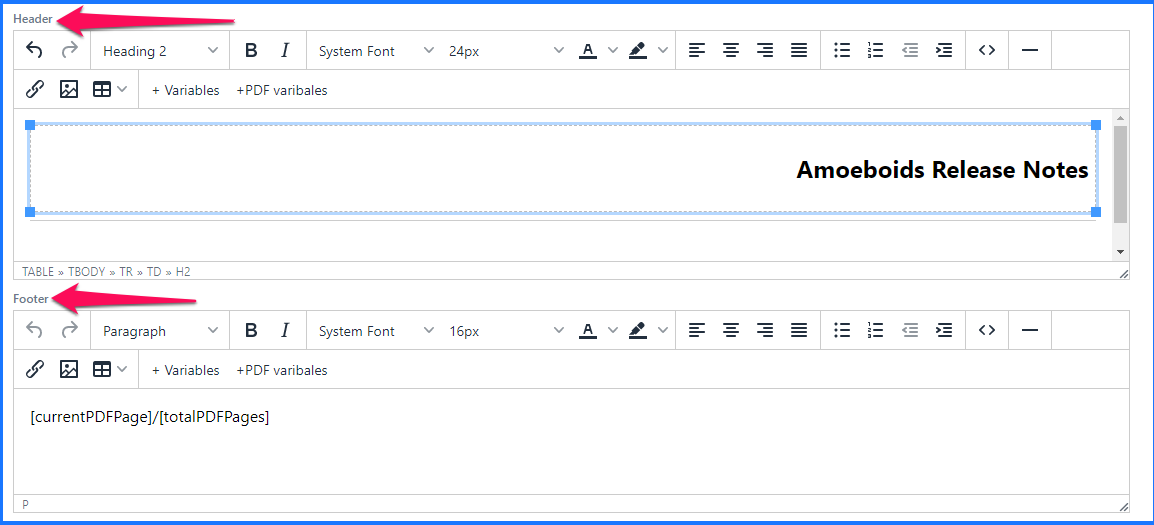
Both, header & footer sections allow using variables. In fact, there are the traditional variables that you use within the PDF body & then there are some specifically available for PDF header/footer.
Using the ‘PDF variables’ you can insert current/total page numbers along with dates in header or footer (or in both places).
Only thing to keep in mind - use custom margins when you have header & footer configured. Depending on the size of your header/footer you have to manually adjust the margins otherwise header/footer won’t show up as expected.
- No labels